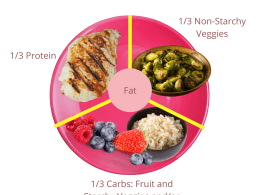If you’ve been to the grocery store recently in search of bone-in, skin-on chicken breasts, you may have noticed their mysterious absence. Once a common staple in many kitchens, these flavorful cuts seem to have disappeared from the shelves. The question arises: What happened to bone-in, skin-on chicken breasts? In this article, we delve into the reasons behind their disappearance and explore the factors contributing to this culinary conundrum.
The Rise of Convenience:
In today’s fast-paced world, convenience plays a significant role in our daily lives, including our food choices. Boneless, skinless chicken breasts have gained popularity due to their ease of preparation and versatility in various recipes. They require less effort to cook and are perceived as a healthier option by many consumers seeking lean protein. As a result, the demand for bone-in, skin-on chicken breasts has dwindled, leading to their reduced availability in stores.
Shifting Consumer Preferences:
Tastes and preferences evolve over time, influencing the demand for specific food products. With the rise of health-consciousness and the focus on low-fat diets, boneless, skinless chicken breasts have become the go-to choice for many individuals. The desire for leaner cuts of meat has contributed to the decline in popularity of bone-in, skin-on chicken breasts, which are perceived as higher in fat and calories. As consumer preferences continue to shift, retailers have adjusted their offerings to cater to these changing demands.
Marketing and Packaging Strategies:
The way chicken is marketed and packaged also plays a role in the availability of bone-in, skin-on chicken breasts. Retailers often prioritize boneless, skinless options due to their broader appeal and marketability. Packaging and labeling highlighting convenience, health benefits, and ease of use attract consumers who seek quick and effortless meal solutions. As a result, bone-in, skin-on chicken breasts may have taken a backseat in the retail landscape, contributing to their disappearance.
Production Efficiency and Cost Considerations:
From a production standpoint, boneless, skinless chicken breasts offer several advantages in terms of efficiency and cost. Processing plants can streamline their operations by deboning and removing the skin from chicken breasts, reducing labor costs and simplifying the packaging process. Moreover, bone-in, skin-on chicken breasts require more careful handling and packaging to maintain their integrity and presentation, increasing production costs. The shift towards boneless, skinless options aligns with the industry’s focus on efficiency and cost-effectiveness.
Culinary Convenience vs. Flavorful Experience:
While boneless, skinless chicken breasts offer convenience, they may lack the flavor and succulence that bone-in, skin-on cuts provide. The bones and skin contribute to enhanced taste, juiciness, and texture, resulting in a more satisfying culinary experience. Food enthusiasts and chefs often favor bone-in, skin-on chicken breasts for their ability to retain moisture during cooking and their potential for creating crispy, golden skin. As a result, some culinary enthusiasts may feel a sense of loss with the disappearance of these flavorful cuts.
Exploring Alternative Sources:
Although bone-in, skin-on chicken breasts may be less prevalent in traditional grocery stores, they can still be found at local butchers, specialty markets, or through direct sourcing from farmers. These alternative sources prioritize variety and quality, offering consumers the opportunity to savor the unique qualities of bone-in, skin-on chicken breasts. Exploring these alternative avenues can rekindle the joy of cooking with these flavorful cuts and support local businesses in the process.
Conclusion:
The disappearance of bone-in, skin-on chicken breasts from grocery store shelves can be attributed to a combination of factors, including shifting consumer preferences, marketing strategies, production efficiency, and cost considerations. However, it’s important to remember that alternative sources still provide opportunities to enjoy the taste and experience of these flavorful cuts. Whether it’s seeking out local butchers or engaging directly with farmers, taking the extra step to find bone-in, skin-on chicken breasts can bring back a sense of culinary delight and elevate your cooking to new heights.











